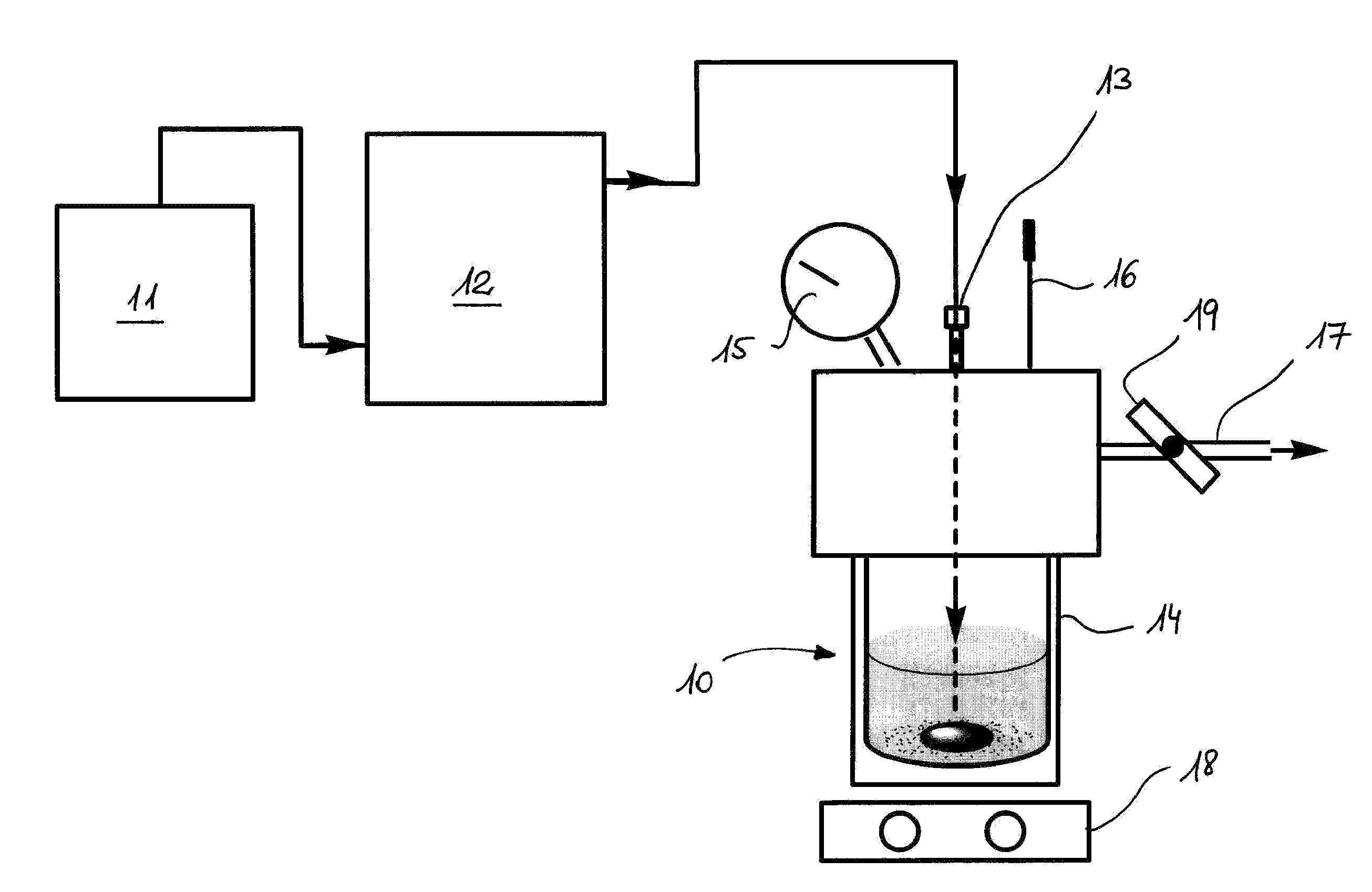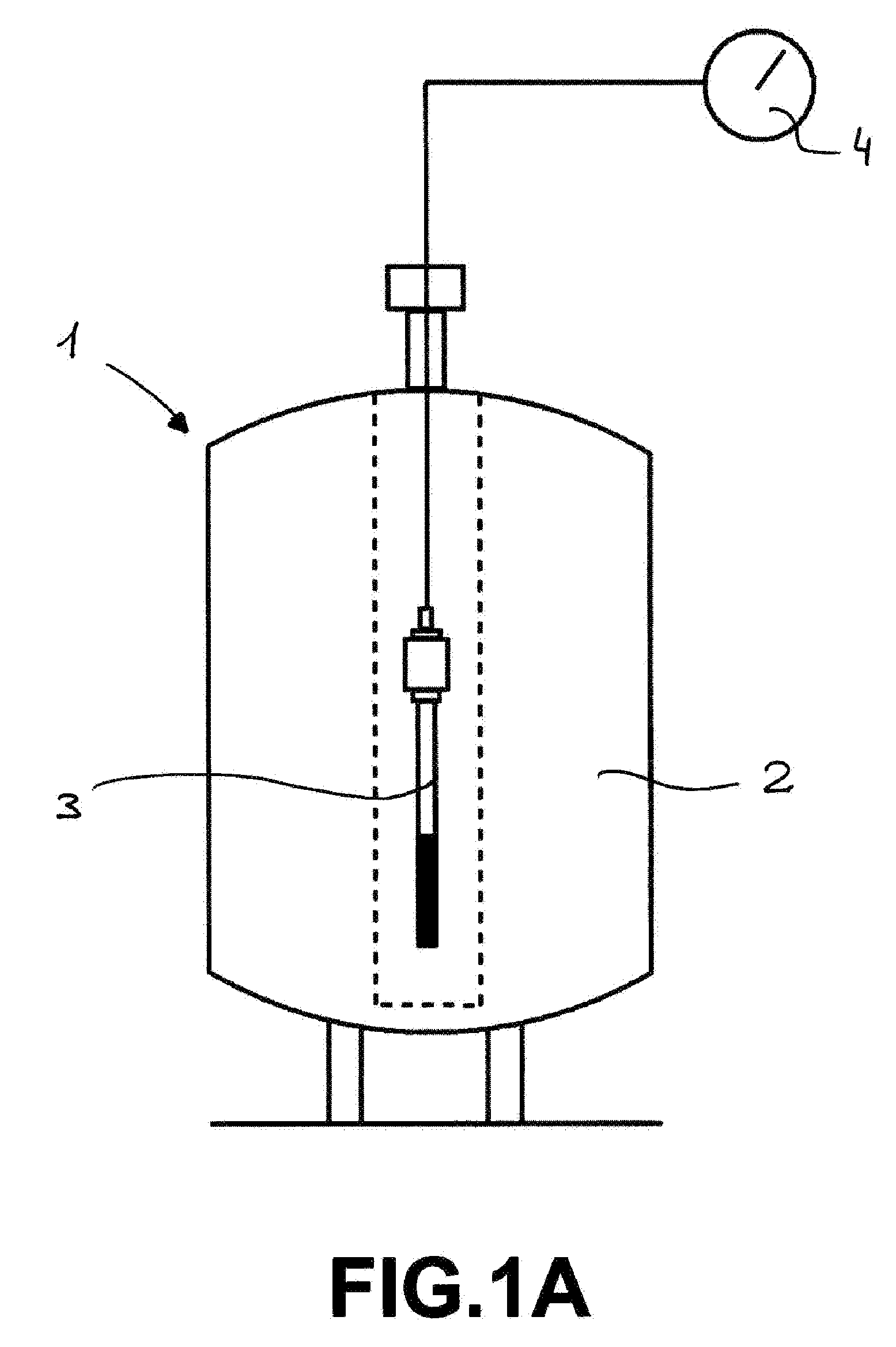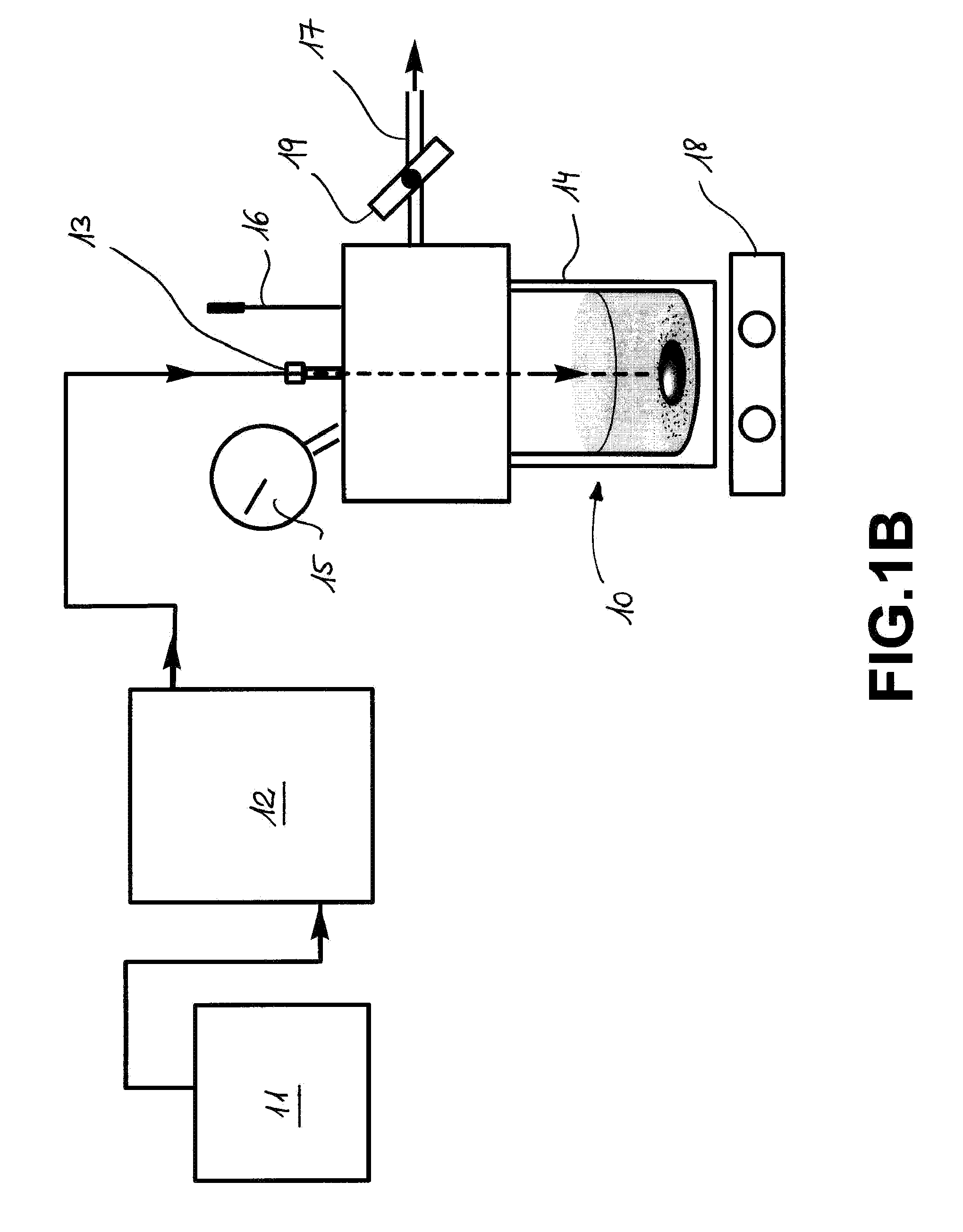Hydrogen production from formic acid
- Summary
- Abstract
- Description
- Claims
- Application Information
AI Technical Summary
Benefits of technology
Problems solved by technology
Method used
Image
Examples
example 1
Preparation of Catalyst [Ru(TPPTS)2(H2O)4](tos)2]
[0117]The catalyst precursor [Ru(TPPTS)2(H2O)4](tos)2], was prepared by dissolving [Ru(H2O)6](tos)2, in which tos=tosylate (4-methylbenzenesulfonate ion) and TPPTS, where TPPTS is tris(3-sulfophenyl)phosphine tri sodium salt, in a molar ratio of 1:2 in water, slightly acidified with tosylic acid.
[0118][Ru(H2O)6](tos)2] is synthesised according to the method of Bernhardt (Bernhardt, P.; Biner, M.; Ludi, A. Polyhedron 1990, 9, 1095-1097). TPPTS is commercially obtained from Aldrich (No 444979) CAS 63995-70-0.
[0119]2.1 g (0.0038 mol) [Ru(H2O)6](tos)2 was mixed with 4.3 g (0.0076 mol) TPPTS in 20 mL water (containing 0.2 g tosylic acid) at 55° C. until the complex formation was complete (NMR check, J. Kovács, F. Joó, A. C. Bényei, G. Laurenczy, Dalton Transac., 2004, 2336), after the water was evaporated in vacuum.
example 2
Experimental Setting for the Preparation of Hydrogen from Formic Acid
[0120]The reaction was carried out in two different reactors:
A) In high pressure sapphire NMR tubes (A. Cusanelli, U. Frey, D. T. Richens, A. E. Merbach, J. Am. Chem. Soc., 1996, 118, 5265) equipped with a manometer, in batch mode. The reaction was followed simultaneously by multinuclear NMR (1H, 13C, 31P) and in the same time by the pressure evolution of the H2 and CO2. This setting 1 is schematically illustrated in FIG. 1A, in which the NMR tube 3, serving as a reaction vessel, comprising the reactants is placed in the NMR spectrometer 2 and wherein a pressure measurement device 4 placed on top of the tube, can be monitored from outside.
B) In a high pressure autoclave of the type Parr 47, equipped with manometer, thermometer, modified for inlet / outlet, connected to a HPLC pump for supplying formic acid with the required pressure. It was used both in batch mode and in continuous mode. The reactor was prepared acco...
example 3
Effect of Temperature on Hydrogen Production from Formic Acid
[0131]The experimental setting of Example 2 is modified to evaluate the effect of temperature on the pressure in the sapphire tube reactor.
[0132]Accordingly, 1.25 mL H2O and 1.25 mL D2O were supplied with 2 mM of the catalyst concentration obtained in Example 1. Formic acid and formate were initially added at a molar ratio of 9:1 and at a total concentration of 4 M. The pH of the solution was about 2.8.
[0133]The reaction was operated batch-wise, by closing the gas-outlet. Cycles 3-6 were conducted at different temperatures and the conversion over time was monitored. Accordingly, the 3rd cycle was conducted at 90° C., the 4th cycle was conducted at 100° C., the 5th cycle was conducted at 80° C. and the 6th cycle at 70° C.
[0134]Each cycle was considered terminated when conversion was more than 90% and no further increase in pressure was observed and no more change in the HCOOH / HCOONa concentration was detected by NMR. Then, ...
PUM
| Property | Measurement | Unit |
|---|---|---|
| Temperature | aaaaa | aaaaa |
| Temperature | aaaaa | aaaaa |
| Temperature | aaaaa | aaaaa |
Abstract
Description
Claims
Application Information
 Login to View More
Login to View More - R&D
- Intellectual Property
- Life Sciences
- Materials
- Tech Scout
- Unparalleled Data Quality
- Higher Quality Content
- 60% Fewer Hallucinations
Browse by: Latest US Patents, China's latest patents, Technical Efficacy Thesaurus, Application Domain, Technology Topic, Popular Technical Reports.
© 2025 PatSnap. All rights reserved.Legal|Privacy policy|Modern Slavery Act Transparency Statement|Sitemap|About US| Contact US: help@patsnap.com



